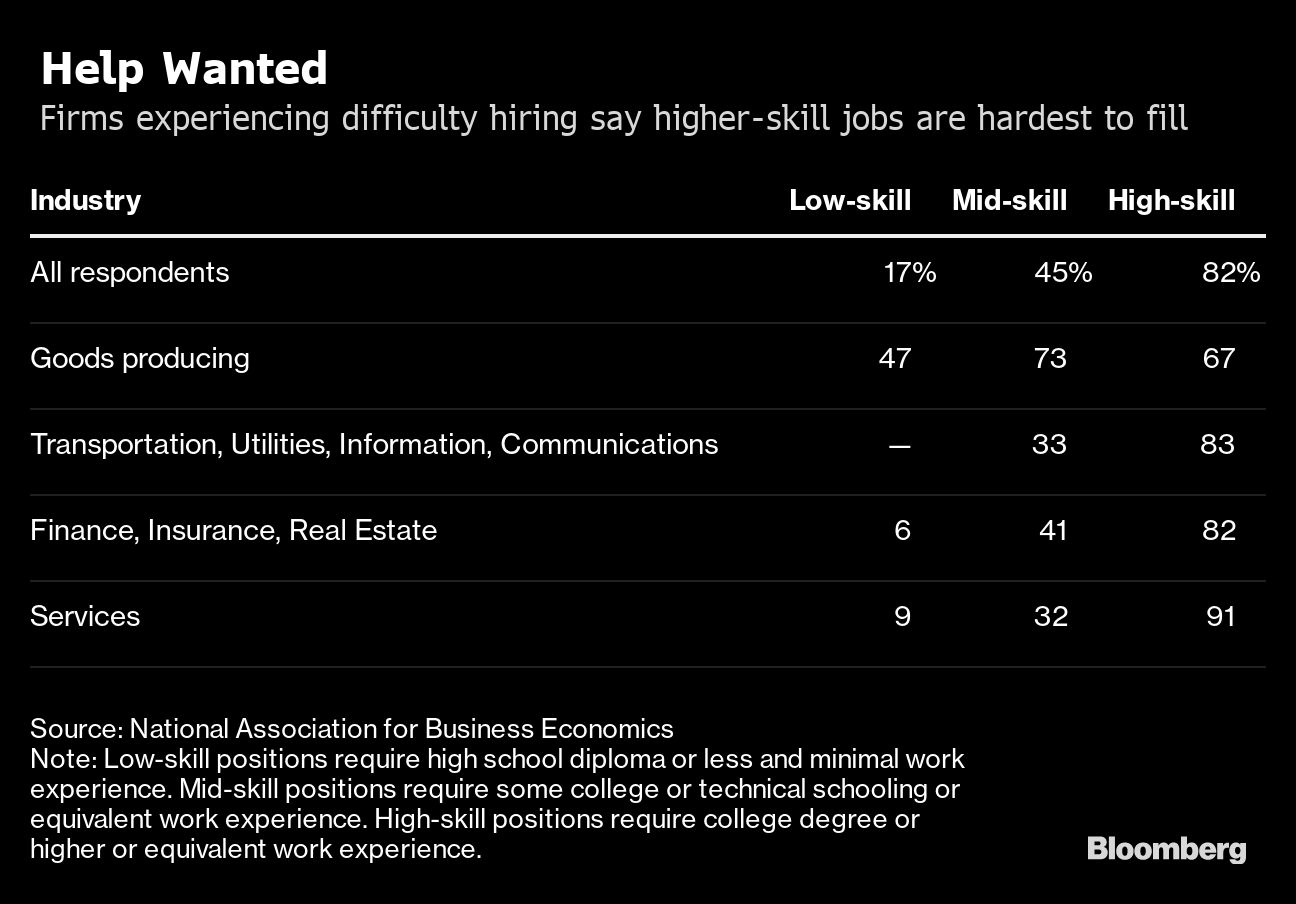More American companies are reporting negative impacts fromtariffs, especially among goods producers, while also seeingpersistent difficulties in hiring for high-skill positions.
|The share citing negative impacts from recent tariffs rose to 35percent in October, from 28 percent in July, though almostone-third of respondents report there's been no impact, accordingto a National Association for Business Economics (NABE) surveyreleased Monday. Among goods producers, two-thirds say tariffs havehurt their business conditions, down from more than three-quartersin July, according to the survey of 101 members from Sept. 26 toOct. 14.
|"After more than a year since the U.S. first imposed new tariffson its trading partners, higher tariffs are disrupting businessconditions, especially in the goods-producing sector," NABEPresident Constance Hunter said in a report on the group's businessconditions survey.
|Despite the complications from trade frictions, more thantwo-thirds of firms say they haven't changed plans for hiring andinvesting in reaction to actual or potential U.S. policyshifts.
|Special questions on the labor market showed employers stillgrappling with tight conditions, with the unemployment rate at ahalf-century low of 3.5 percent. Most respondents say their firmshave taken one or more steps to address staffing difficulties suchas training their staff for promotions. That's become increasinglycommon, with 42 percent doing so, versus 36 percent in July.
|High-skill positions remain hardest to staff, with 82 percentciting challenges, versus 89 percent in July. Some 45 percentreport difficulty filling mid-skill jobs, more than in July, and asixth struggled with low-skill posts. Goods producers have thehardest time with mid- and low-skill jobs, while services companieshad the most difficulty landing high-skill workers.
|
Raising wages remains the most common remedy for employerstrying to fill openings, with more than two-thirds of goodsproducers doing so and 43 percent among all industries. About athird of companies are investing in labor-saving processes, andmore than half of producers.
|With Federal Reserve policymakers due to meet this week, half ofNABE members surveyed said recent interest-rate cuts haven'tchanged their expectations of business conditions this year andmore than a third said the reductions have made their outlook morefavorable.
|The central bank lowered rates for the first time in a decade onJuly 31 and made another reduction on Sept. 18. Analysts andtraders expect a third-straight rate reduction to be announced onWednesday.
|Of the 101 survey respondents from private-sector firms orindustry trade associations, 41 percent were from firms with morethan 1,000 employees, while 15 percent were from companies with 101to 1,000 staff and the remainder from smaller businesses, includingsome single-person firms.
||
|
Copyright 2019 Bloomberg. All rightsreserved. This material may not be published, broadcast, rewritten,or redistributed.
Complete your profile to continue reading and get FREE access to Treasury & Risk, part of your ALM digital membership.
Your access to unlimited Treasury & Risk content isn’t changing.
Once you are an ALM digital member, you’ll receive:
- Critical Treasury & Risk information including in-depth analysis of treasury and finance best practices, case studies with corporate innovators, informative newsletters, educational webcasts and videos, and resources from industry leaders.
- Exclusive discounts on ALM and Treasury & Risk events.
- Access to other award-winning ALM websites including PropertyCasualty360.com and Law.com.
*May exclude premium content
Already have an account? Sign In
© 2024 ALM Global, LLC, All Rights Reserved. Request academic re-use from www.copyright.com. All other uses, submit a request to [email protected]. For more information visit Asset & Logo Licensing.






